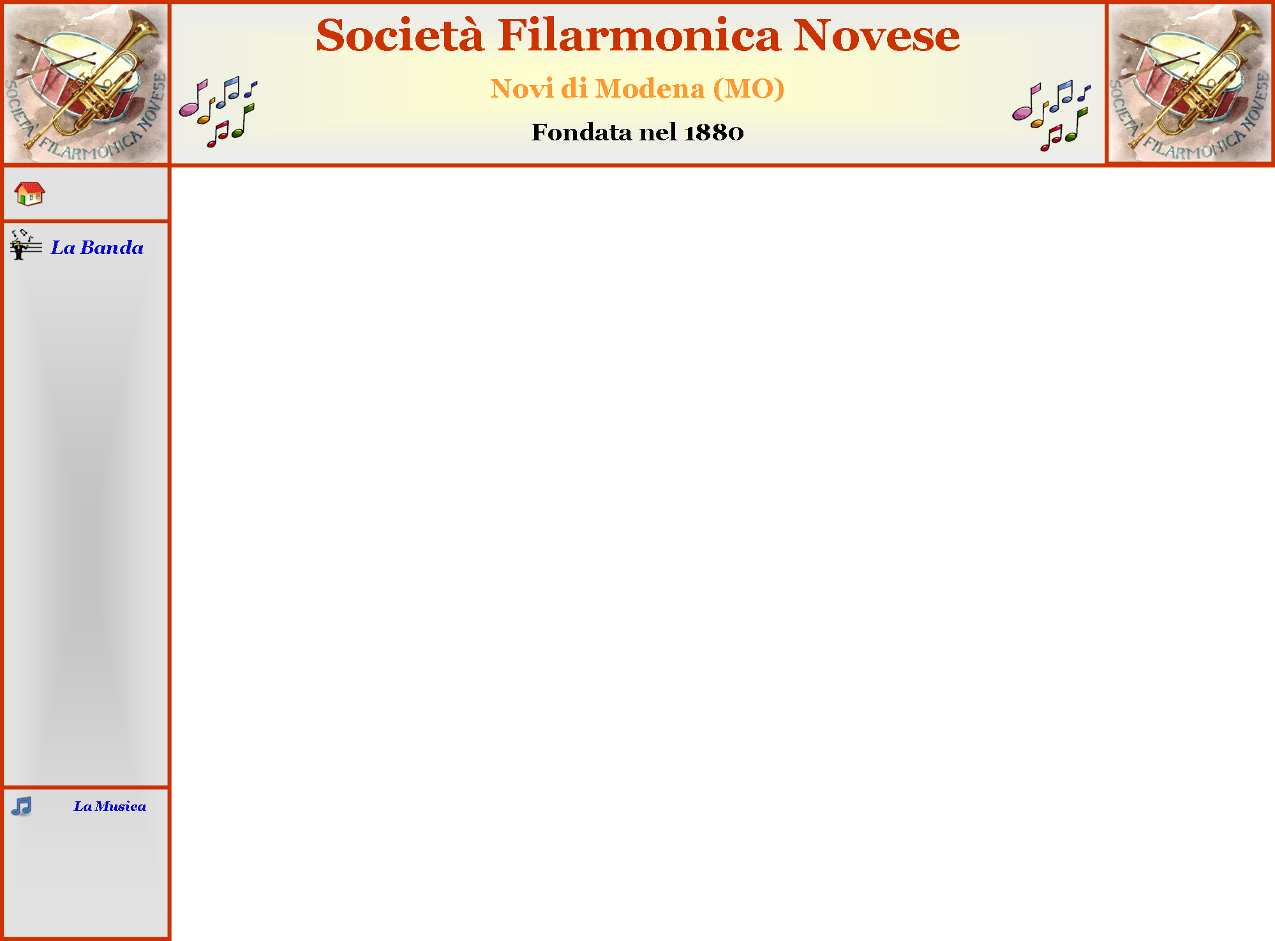
|
La sua attività si svolge prevalentemente nelle corti, nelle piazze e nelle balere, suona prevalentemente brani orecchiabili e ballabili. Le capacità individuali dei singoli strumentisti sono però piuttosto modeste, frutto di una didattica pressappochista e finalizzata più al divertimento che alla formazione qualitativa.
|
|
Alla fine del diciannovesimo secolo è proprio la Filarmonica Novese che diffonde la cultura musicale tra popolazione locale, per lo più analfabeta o semianalfabeta, proponendo un repertorio che attinge alla musica lirica , senza però interrompere la partecipazione ad occasioni più giocose e divertenti, quali i “concerti in bicicletta”, molto diffusi all’epoca. Grande coraggio e fiducia nel futuro nascono per la Filarmonica Novese in seguito alla vittoria del Primo Premio al Concorso Internazionale di Milano nel 1906. Nel 1912 nasce a Novi l’Università Popolare, un’istituzione laica e apolitica che si propone di divulgare la cultura organizzando eventi all’interno del Comune. La banda partecipa alle iniziative occupandosi della parte musicale ad esse inerente. Lo scoppio della Prima Guerra Mondiale segna un declino per la società, che si limita ad organizzare lezioni saltuarie a giovani allievi, aspettando il ritorno dal fronte dei suonatori. |
|
Nel 1919 ricomincia l’attività, la Scuola di Musica diventa un organo ufficiale del Comune. Ma già negli anni venti la situazione torna complicarsi. L’ondata di violenza che si diffonde nelle campagne costringe i novesi ad abbandonare i sogni di pace ed equilibrio tanto sperati dopo la fine della guerra. Per motivi di ordine pubblico molte delle manifestazioni in cui la banda abitualmente si esibiva vengono soppresse, aumenta la tensione psicologica e nascono screzi al suo interno per la difficoltà di numerosi suonatori ad accettare l’inserimento obbligatorio di inni fascisti nel repertorio. |
|
Verso la fine degli anni venti la gente inizia a rassegnarsi alla nuova situazione politica e cerca di andare avanti con la propria vita facendo progetti sociali e culturali, come quello inerente al teatro. Nel 1926 infatti alcuni novesi si associano per la creazione e gestione di un teatro sociale, all’interno del quale la banda si esibisce moltissime volte, fino a prenderlo in gestione per alcuni mesi a cavallo tra il 1927 e il 1928. Il repertorio è ormai esclusivamente lirico e ben si adatta al nuovo luogo di esibizione. |
|
Nel 1927 in occasione delle esposizioni per le onoranze ad Alessandro Volta la Filarmonica partecipa al Concorso Internazionale di Como, vincendo il 3° Premio. L’iniziativa è economicamente molto gravosa per la banda, che ne esce decisamente in deficit. Negli anni trenta continuano i problemi economici, fino al tracollo causato dalla soppressione del contributo comunale alla società e alla scuola di musica. Lo scoppio della Seconda Guerra Mondiale allontana molti giovani dal paese, suonatori e allievi sono chiamati alle armi aprendo un altro capitolo buio della storia della Società.
|
|
Nel 1945 la banda a testa alta riparte, pur se gravata da perdite umane, difficoltà economiche, emigrazione all’estero di suonatori. Il ritorno della democrazia fa sì che vengano riallacciati i rapporti col Comune e dà grandi speranze alla banda, che riprende la sua attività e la avvia ai momenti più floridi della sua stessa storia. Nel 1959 La Filarmonica parte alla volta di Bree, in Belgio. Per la prima volta viene organizzata un’uscita all’estero, con grande emozione ed apprensione da parte di tutti i componenti che si impegnano ad un punto tale da riportare la vittoria del Primo Premio al Concorso Internazionale. Alcuni anni dopo, nel 1962, di nuovo una grande vittoria: Primo Premio con lode al Concorso Internazionale di Vasserbilling, in Lussemburgo. Nasce così la tradizione delle “gite della banda”, divenute un mito all’interno della società e del paese. Sempre più spesso infatti la Filarmonica partecipa ad eventi musicali in Italia e all’estero conciliando la partecipazione agli stessi con la visita turistica locale e sempre più spesso si aggregano alla banda accompagnatori d’ogni tipo, famigliari e amici prima, sostenitori poi, fino a raccogliere attorno a se qualsiasi Novese e non che voglia unirsi al gruppi per condividere l’esperienza. |
|
Nel 1971 partecipa al Festival Folkloristico del Danubio a Baja, in Ungheria, nel 1973 è la volta di Sarajevo. Nel 1980 La Filarmonica mobilita l’intero comune, le associazioni, le bande vicine per organizzare uno degli eventi più grandi della sua storia: i festeggiamenti in occasione del Centenario. Le manifestazione musicali coinvolgono l’intero paese e vengono ricordate tuttora come un evento-culto della storia novese. Il 1987 è ricordato come l’anno della vittoria del Secondo Premio al Concorso Internazionale di Musica di Hamar in Norvegia. Il 1988 quello della vittoria del Terzo Premio al Festival Internazionale di Musica di Siklos, in Ungheria. Nel 1989 la Filarmonica si esibisce nei più famosi e caratteristici luoghi della città di Barcellona, in Spagna. Nel 1992 partecipa al 30° Festival Internazionale di Musica di Kolin, nella Repubblica Ceca. In quell’occasione si svolge l’incontro con una banda con cui nasce una bella e costruttiva amicizia, viene da Motala , una cittadina nel sud della Svezia. |
|
La Filarmonica Novese si reca a Motala nel 1994, dove si esibisce numerose volte all’interno della città, nel 1995 sono gli amici svedesi a raggiungere Novi per portare a termine lo scambio culturale. Sarà proprio agli amici svedesi che la banda scriverà il 10 settembre dello stesso anno una cartolina di saluti da Cascina (Pisa), per condividere con loro la gioia della vittoria al Concorso Bandistico Interregionale. Nel 1997 organizza lo scambio culturale con la banda di Nurtingen, in Germania, esibendosi nella città in più occasioni, e ospita a sua volta la banda tedesca nel 1998. Nel 2000 partecipa al raduno Internazionale nella città di Wolfsberg, in Austria, nel 2002 in quello nazionale d’Amantea (Cosenza). Nel 2004 partecipa poi al Festival Bandistico Internazionale di Genova, in occasione delle iniziative organizzate in occasione di “Genova capitale europea della cultura”. |
|
Nel giugno dell’anno 2005,la Filarmonica parteciperà al Festival Bandistico Internazionale di Francoforte sull’Oder, in Germania. L’anno seguente il 2006 la Filarmonica Novese parteciperà a Malgrat de Mar in Spagna al Concorso Bandistico Internazionale ottenendo un 5° posto. Degne di nota le partecipazioni nel 2008 ad Offida(AP) ospiti della Banda locale e a Caldes(TN) nel 2009 in cui partecipa alla bellissima manifestazione Musica&Gusto insieme a tante altre formazioni bandistiche italiane ed europee. Attualmente la Filarmonica Novese, tenendo fede alla sua stessa storia , è costituita da dilettanti volontari, circa sessanta, d’età prevalentemente compresa tra i tredici e i trent’anni. La formazione di nuovi elementi può fare affidamento su un’efficiente Scuola Comunale di Musica il cui indirizzo didattico è mirato prevalentemente all’insegnamento di strumenti per la banda. Sono questi allievi (attualmente sono in numero di 60) a costituire la struttura della banda ed a garantirne quella futura. Da parecchi anni gli allievi della Scuola di Musica si esibiscono in concerti di musica d’assieme all’interno della “Banda degli Allievi”, nell’ambito comunale e non. Hanno infatti partecipato a scambi culturali con le bande degli allievi di Sona (VR), Quistello (MN) e Reggiolo (RE). Partecipano inoltre a “Rataplan”, la rassegna di giovani musicisti che si svolge ogni anno a Modena e hanno sfilato numerose volte all’interno della “Banda Mascotte” che apre la parata delle bande militari all’interno del Festival Internazionale delle Bande Militari organizzato ogni anno dall’Accademia Militare di Modena. MAGGIO 2012 : un forte terremoto a più riprese scuote l’Emilia Romagna, la Banda in un sol momento rimane senza scuola di musica e aula prove in quanto la sala è gravemente danneggiata. Da qual momento inizia un lungo percorso di raccolta fondi e concerti benefici con il solo scopo di ricostruire al più presto una nuova sede. Nell’anno 2015 finalmente la Filarmonica Novese inaugura la nuova scuola di musica ricostruita interamente dopo il terremoto e nell’occasione del 135° compleanno invita tutte le delegazioni che ci hanno aiutato per la ricostruzione per una grande festa e concertone. ANNO 2016: la Filarmonica vince il Primo premio (seconda categoria) al prestigioso concorso bandistico a Riva del Garda.
|


|
La Banda Municipale e Nazionale inizia così la sua attività, esibendosi in occasione di parate e feste ufficiali. La sua storia è piuttosto breve, infatti nel 1869 interrompe la sua attività. Torna costituirsi ufficialmente nel 1881, anche se gli affezionati amano ricordare il 1880 come anno di nascita in quanto il fervore della ricostruzione era già allora presente. Assume stavolta il nome di “Società del Concerto Musicale” e si esibisce prevalentemente nell’ambito di veglioni e balli popolari. Nel 1886 tramuta il suo nome in “Società Filarmonica Novese”, rimasto tale fino ai giorni nostri , ma si fa chiamare anche “Fanfara Sempre Avanti” quando si esibisce in sfilate o funerali. La sua sede sono alcune stanze all’interno degli edifici comunali. |
|
La Società Filarmonica Novese nasce a Novi di Modena nel 1861 per volontà del Conte Bonifazio Rangoni Testi, che propone al Sindaco l’istituzione di una “Banda Municipale e Nazionale”. La giunta accetta con entusiasmo la proposta e stanzia quattrocento lire per dare l’avvio ai lavori di formazione di un complesso bandistico e di una scuola di musica. Lo stesso Conte Rangoni Testi mette a disposizione gli spazi del suo palazzo (attuale Villa delle Rose) per la creazione di una scuola di musica in cui si realizzi l’insegnamento di strumenti a fiato e ad arco. |
|
Persino la più piccola frase musicale può assorbire e trasportarci via dalle città, dai paesi, dal mondo e da tutte le sue cose terrene. E’ un dono di Dio.(F. Meldelssohn) |

|
Ora attuale |
|
Nel corso degli anni questo atteggiamento cambia e i diversi insegnanti che si susseguono iniziano a fare progetti formativi più ambiziosi e lungimiranti sui loro allievi, fino a costituire una banda di più alto livello, capace di eseguire brani di un certo impegno. |
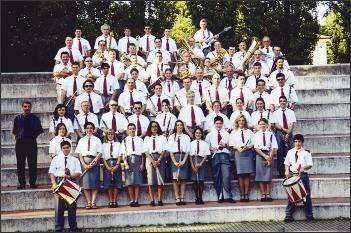
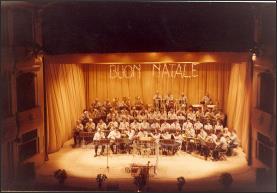

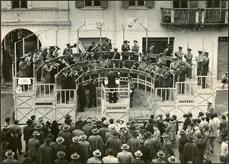
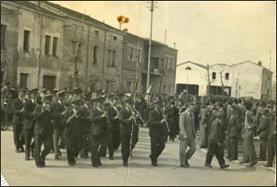
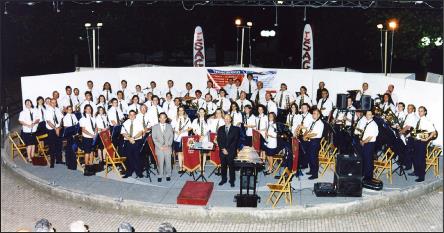
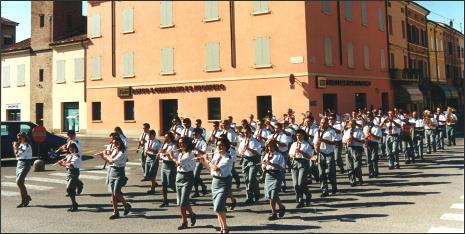
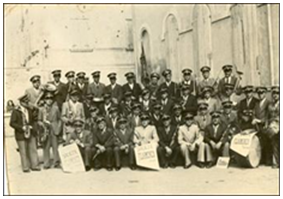
|
Sito sviluppato dalla Società Filarmonica Novese - Versione 4.1 - 2009 Copyright M. Sassi Webmaster : M. Sassi massimo.sassi@filarmonicanovese.it |
|
Home | Chi Siamo | Storia della Banda| Contatti | Appuntamenti | Sede | Scuola Musica | Trofei | Locandine | Divisa | Galleria | Dicono di Noi | Educazione | Strumenti | S. Cecilia | Curiosità Musicali | Links | Credits Download | Statistiche | |
|
English Version |